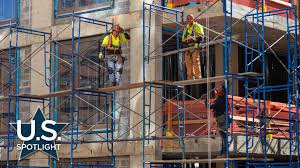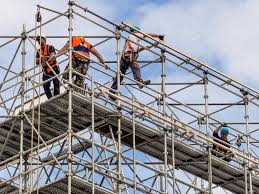
NEW YORK — June 26, 2025 — A proposal to exempt federally funded construction projects from New York’s long-standing Scaffold Law is gaining traction in Congress, and contractors across the state are voicing strong support.

The measure, introduced by U.S. Rep. Nick Langworthy, R-N.Y., seeks to lift the absolute liability burden from builders working on federal projects in the state. The timing could be critical: lawmakers are beginning work on the next federal surface transportation reauthorization bill, which will succeed the Infrastructure Investment and Jobs Act when it expires in 2026.
Mike Elmendorf, president and CEO of the Associated General Contractors of New York State, says the legislation has a viable path forward, especially if it’s packaged with broader infrastructure legislation. “It’s substantial. It drives up the cost of construction, which results in less construction, fewer construction jobs,” said Elmendorf. “In particular, it hurts smaller contractors and MWBE firms who, in many cases, can’t get or afford the liability insurance that they would need.”
New York’s Scaffold Law, unique among states, imposes absolute liability on property owners and contractors for gravity-related injuries — meaning they are held fully responsible, even if a worker’s own negligence contributed to the incident. Shifting to a comparative negligence standard, where fault is divided proportionally, would ease that burden on contractors and potentially expand access to liability insurance.
Supporters argue that the current law inflates construction costs across the board. For instance, Elmendorf cited a case where a contractor paid $6.54 per $1,000 of revenue for general liability coverage in New York — a 31.3% increase over rates in other states. For carpentry-specific work, premiums can reach $17.37 per $100 of payroll, compared to $3.19 in North Carolina.

The economic toll isn’t theoretical. According to Elmendorf, the Scaffold Law added over $200 million to the total cost of the Mario Cuomo Bridge project.
However, worker safety advocates warn that weakening the law would erode hard-won protections. A report from personal injury law firm Leitner Varughese Warywoda argues, “By holding owners and contractors strictly liable for elevation-related hazards, the Scaffold Law creates a powerful incentive to invest in safety.” The report links the law to a measurable decrease in workplace injuries in the state.
Elmendorf rejected that claim. “There is no evidence that suggests that this makes construction sites safer,” he said. “In fact, it treats the unscrupulous contractor, if they end up in court, the same way as the contractor who does everything right. That’s wrong.”
Under current law, unless the injured worker is deemed the sole proximate cause, contractors are automatically liable — even when safety equipment and training were provided.
The proposed federal exemption could pave the way for a broader reconsideration of the Scaffold Law, long criticized by builders for distorting the liability insurance market and undermining project delivery timelines. If passed, the legislation would apply only to federally funded infrastructure jobs in the state, but it may reignite debate about statewide reform.
With momentum building and infrastructure investment at the center of national policy discussions, Langworthy’s bill has sparked fresh conversations about balancing safety and accountability with financial sustainability for builders — especially those already operating on thin margins.
Originally reported by Sebastian Obando in Construction Dive.